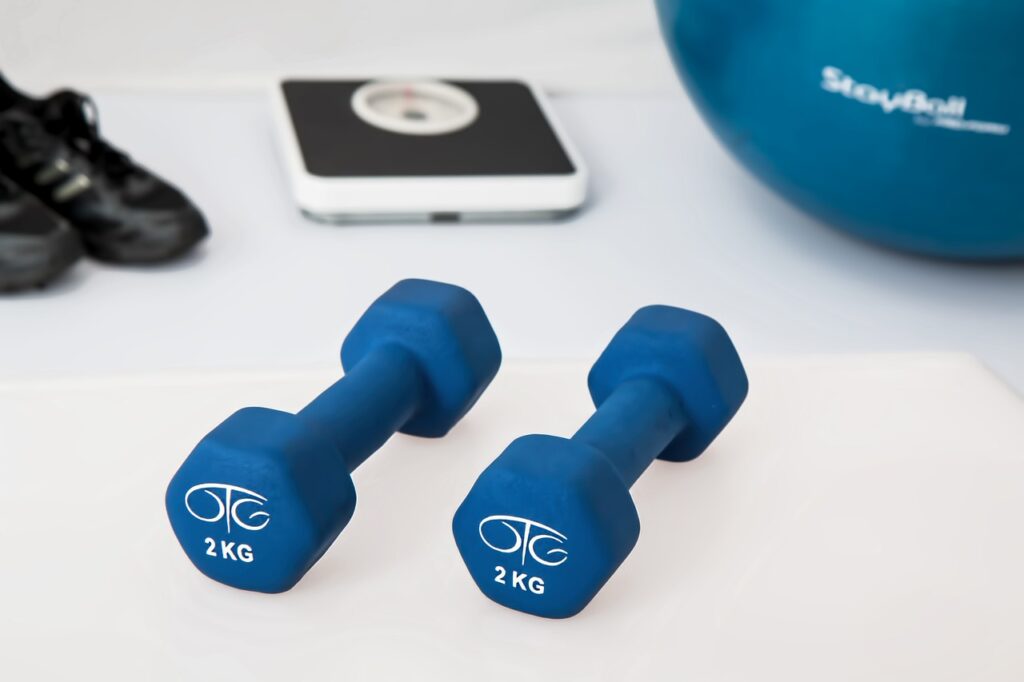
Regular exercise is an important part of a healthy lifestyle, and this is especially true during pregnancy. However, many women are hesitant to engage in weight loss exercise during pregnancy due to concerns about the safety of their unborn child. Fortunately, research has shown that exercise during pregnancy can be both safe and beneficial for both mother and baby.
The American College of Obstetricians and Gynecologists recommends that pregnant women engage in moderate exercise for at least 30 minutes a day on most, if not all, days of the week. This can include activities such as walking, swimming, or prenatal yoga. However, it is important to consult with a healthcare provider before starting any exercise program during pregnancy, especially if there are any underlying medical conditions.
Table of Contents
Understanding Pregnancy and Exercise
Pregnancy is a time of physical and emotional changes for women. Exercise during pregnancy can have many benefits, including improved cardiovascular health, better mood, and weight management. However, it is important to understand that pregnancy is not the time to start an intense exercise regimen or to try to lose weight.
The American College of Obstetricians and Gynecologists recommends that pregnant women get at least 150 minutes of moderate-intensity aerobic exercise per week, spread throughout the week. This can include activities such as brisk walking, swimming, or stationary cycling. Women who were highly active before pregnancy may be able to continue their usual exercise routine with modifications as advised by their healthcare provider.
It is important to note that certain types of exercise, such as contact sports or activities with a high risk of falling, should be avoided during pregnancy. Additionally, pregnant women should avoid exercises that involve lying flat on their back after the first trimester, as this can decrease blood flow to the uterus.
Overall, exercise during pregnancy can be safe and beneficial when done in moderation and with guidance from a healthcare provider. It is important to listen to your body and make modifications as needed.
Benefits of Weight Loss Exercise During Pregnancy
Maintaining a healthy weight during pregnancy is important for both the mother and the baby. Engaging in weight loss exercise during pregnancy can provide numerous benefits for the mother and the baby. Here are some of the benefits of weight loss exercise during pregnancy:
1. Helps control weight gain
Pregnancy can cause weight gain, and excessive weight gain during pregnancy can lead to various health problems. Weight loss exercise during pregnancy can help control weight gain and prevent the risk of developing gestational diabetes, hypertension, and pre-eclampsia.
2. Improves mood and reduces stress
Pregnancy can be a stressful time for many women. Engaging in weight loss exercise during pregnancy can help reduce stress and improve mood. Exercise releases endorphins, which can help reduce anxiety and depression.
3. Helps prepare for labor and delivery
Weight loss exercise during pregnancy can help prepare the body for labor and delivery. Exercise can strengthen the pelvic floor muscles, which can help make labor and delivery easier. It can also improve endurance, which can be beneficial during labor.
4. Reduces the risk of complications
Weight loss exercise during pregnancy can reduce the risk of complications during pregnancy and delivery. It can lower the risk of preterm labor, macrosomia (large baby), and cesarean delivery.
5. Improves overall health
Engaging in weight loss exercise during pregnancy can improve overall health. It can improve cardiovascular health, reduce the risk of developing gestational diabetes, and improve sleep quality.
In conclusion, weight loss exercise during pregnancy can provide numerous benefits for both the mother and the baby. It can help control weight gain, improve mood, prepare for labor and delivery, reduce the risk of complications, and improve overall health.
Safety Guidelines for Pregnant Women
Pregnancy is a delicate time for women, and it is important to prioritize safety when engaging in any form of physical activity. Here are some safety guidelines for pregnant women who want to exercise:
Consult with a Healthcare Provider
Before starting any exercise routine, pregnant women should consult with their healthcare provider to determine what types of exercises are safe for them. Women with pregnancy complications or high-risk pregnancies may need to avoid certain exercises altogether.
Avoid High-Impact Exercises
High-impact exercises such as running or jumping should be avoided during pregnancy as they can put excessive strain on the joints and pelvic floor muscles. Instead, low-impact exercises such as walking, swimming, or prenatal yoga are recommended.
Stay Hydrated
Pregnant women should drink plenty of water before, during, and after exercise to stay hydrated. Dehydration can increase the risk of preterm labor and other pregnancy complications.
Avoid Overexertion
Pregnant women should avoid overexerting themselves during exercise. They should listen to their bodies and take breaks when necessary. Overexertion can lead to dizziness, shortness of breath, and other complications.
Wear Appropriate Clothing
Pregnant women should wear comfortable, loose-fitting clothing that allows for free movement during exercise. They should also wear supportive footwear to prevent falls and injuries.
By following these safety guidelines, pregnant women can safely engage in exercise during pregnancy to promote weight loss and overall health.
Recommended Exercises for Pregnant Women
Pregnancy is a critical time for women, and it is essential to maintain a healthy lifestyle. Exercise is one way for pregnant women to stay healthy and fit. Here are some recommended exercises for pregnant women:
Low-Impact Aerobics
Low-impact aerobics are an excellent choice for pregnant women. They are safe and easy on the joints, which is essential during pregnancy. Low-impact aerobics can help improve cardiovascular health, increase endurance, and reduce stress. Examples of low-impact aerobics include brisk walking, stationary cycling, and using an elliptical machine.
Prenatal Yoga
Prenatal yoga is a gentle form of exercise that can help pregnant women stay flexible and calm. It is also an excellent way to improve balance and posture, which can be challenging during pregnancy. Prenatal yoga can also help reduce stress and anxiety. Some yoga poses may need to be modified or avoided during pregnancy, so it is essential to consult with a certified prenatal yoga instructor before starting.
Swimming and Water Workouts
Swimming and water workouts are another great option for pregnant women. They are low-impact and can help improve cardiovascular health, increase endurance, and reduce stress. Swimming can also help reduce swelling and discomfort associated with pregnancy. It is essential to avoid diving or jumping into the water and to use caution when getting in and out of the pool.
Strength Training
Strength training is an excellent way for pregnant women to maintain muscle mass and strength. It can also help improve posture and reduce the risk of back pain. However, it is essential to use caution and avoid exercises that put too much strain on the abdominal muscles. Examples of safe strength training exercises include squats, lunges, and modified push-ups.
Stretching and Flexibility Exercises
Stretching and flexibility exercises can help pregnant women maintain flexibility and reduce the risk of injury. They can also help reduce stress and improve posture. Examples of safe stretching and flexibility exercises include gentle stretching, prenatal yoga, and Pilates.
It is essential to consult with a healthcare provider before starting any exercise program during pregnancy. Pregnant women should also listen to their bodies and avoid overexertion or exercises that cause discomfort.
Exercise Intensity and Duration
When it comes to exercising during pregnancy, it is important to consider both the intensity and duration of the workout. The American College of Obstetricians and Gynecologists recommends that pregnant women engage in moderate-intensity exercise for at least 150 minutes per week.
Moderate-intensity exercise is defined as an activity that raises the heart rate and causes sweating, but still allows for conversation. Examples of moderate-intensity exercise include brisk walking, cycling on a stationary bike, and swimming.
It is important to note that pregnant women should avoid high-intensity exercise, as it can put too much stress on the body and potentially harm the fetus. High-intensity exercise includes activities such as running, jumping, and heavy weightlifting.
In terms of duration, pregnant women should aim to exercise for at least 30 minutes per day, most days of the week. However, it is important to listen to your body and adjust your workout as needed. If you experience any discomfort or pain while exercising, stop immediately and consult with your healthcare provider.
Overall, exercising during pregnancy can have numerous benefits for both the mother and the baby. By following the recommended guidelines for intensity and duration, pregnant women can safely and effectively incorporate exercise into their daily routine.
Nutrition and Hydration
Maintaining a healthy diet and staying hydrated during pregnancy is crucial for both the mother and the developing fetus. Adequate nutrition and hydration can help to prevent complications and support healthy weight gain.
It is recommended that pregnant women consume a balanced diet that includes a variety of nutrient-dense foods such as fruits, vegetables, whole grains, lean proteins, and healthy fats. It is also important to avoid foods that are high in sugar, saturated fats, and sodium.
In addition to a healthy diet, pregnant women should aim to drink at least 8-10 cups of water per day to stay hydrated. However, it is important to note that excessive water intake can lead to overhydration, which can be harmful to both the mother and the baby.
It is also important for pregnant women to talk to their healthcare provider about any supplements they may need, such as folic acid, iron, and vitamin D. These supplements can help to ensure that both the mother and the baby are getting the nutrients they need for optimal health.
Overall, maintaining a healthy diet and staying hydrated during pregnancy is essential for the health and well-being of both the mother and the developing fetus.
Monitoring Your Progress
It’s important to monitor your progress during pregnancy to ensure that you are staying on track with your weight loss goals while also maintaining a healthy pregnancy. Here are some tips for monitoring your progress:
- Keep a food diary: Writing down what you eat can help you stay accountable and make healthier choices. It can also help you identify any patterns or habits that may be hindering your weight loss progress.
- Track your weight: Regularly weighing yourself can help you monitor your progress and make adjustments as needed. However, it’s important to keep in mind that weight gain is a natural part of pregnancy, and you should consult with your healthcare provider to determine a healthy weight gain range for your individual situation.
- Measure your body: In addition to tracking your weight, measuring your body can also be helpful in monitoring your progress. You can measure your waist, hips, and other areas to see if you are losing inches even if the scale isn’t moving.
- Set realistic goals: It’s important to set realistic goals for weight loss during pregnancy. Losing 1-2 pounds per week is a safe and healthy rate of weight loss. Consult with your healthcare provider to determine a healthy weight loss goal for your individual situation.
By monitoring your progress, you can stay on track with your weight loss goals while also ensuring a healthy pregnancy.
When to Avoid Exercise
During pregnancy, exercise is generally considered safe and beneficial for both the mother and the baby. However, there are certain situations when exercise should be avoided or modified to ensure the safety of the mother and the baby.
If a pregnant woman experiences any of the following conditions, she should avoid exercise and consult her healthcare provider:
- Vaginal bleeding
- Preterm labor
- Ruptured membranes
- Preeclampsia or pregnancy-induced hypertension
- Placenta previa after 26 weeks of gestation
- Incompetent cervix
- Intrauterine growth restriction
- Multiple gestation at risk of premature labor
- Persistent second- or third-trimester breech position
In addition, pregnant women should avoid activities that carry a high risk of falling or abdominal trauma, such as contact sports, skiing, horseback riding, and gymnastics. Scuba diving should also be avoided due to the risk of decompression sickness.
It is important for pregnant women to listen to their bodies and avoid pushing themselves too hard during exercise. They should stop exercising and seek medical attention if they experience any of the following symptoms:
- Vaginal bleeding or leakage of amniotic fluid
- Dizziness or faintness
- Shortness of breath
- Chest pain or palpitations
- Headache
- Muscle weakness or calf pain
- Decreased fetal movement
Overall, pregnant women should consult with their healthcare provider before starting or continuing an exercise program during pregnancy, especially if they have any medical conditions or concerns. By following the appropriate guidelines and precautions, exercise can be a safe and effective way to promote weight loss and overall health during pregnancy.
Postpartum Exercise Transition
After giving birth, it is important for new mothers to gradually transition back into exercise. The body needs time to heal and recover from the physical stress of pregnancy and childbirth. It is recommended to wait until after the six-week postpartum check-up before starting any exercise program.
Before starting any exercise program, it is important to consult with a healthcare provider. They can provide guidance on the appropriate level and type of exercise based on individual health status and recovery progress.
Low-impact exercises such as walking, swimming, and yoga can be great options for postpartum exercise. These exercises can help improve cardiovascular health, muscle strength, and flexibility. It is important to start slowly and gradually increase the intensity and duration of exercise over time.
Pelvic floor exercises, also known as Kegels, can also be beneficial for postpartum recovery. These exercises can help strengthen the pelvic floor muscles that may have been weakened during pregnancy and childbirth.
It is important to listen to the body and avoid pushing too hard too soon. Overexertion can lead to injury and delay the recovery process. With patience and consistency, new mothers can safely and effectively transition back into exercise after childbirth.
Frequently Asked Questions
What are safe weight loss exercises for the first trimester of pregnancy?
During the first trimester of pregnancy, it is generally safe to continue with your pre-pregnancy exercise routine. However, it is important to consult with your healthcare provider to ensure that the exercises you are doing are safe for you and your baby. Low-impact exercises such as walking, swimming, and prenatal yoga are generally safe options for weight loss during the first trimester.
How can I safely perform weight loss exercises in the second trimester?
In the second trimester, it is important to avoid exercises that involve lying flat on your back or putting too much pressure on your belly. Consider low-impact exercises such as prenatal Pilates, stationary cycling, and water aerobics. It is also important to listen to your body and avoid overexertion.
Are there any recommended exercises for weight loss in the third trimester of pregnancy?
As you approach the third trimester, it is important to focus on exercises that help prepare your body for labor and delivery. Walking, prenatal yoga, and swimming are great options for weight loss during this stage of pregnancy. It is also important to avoid exercises that could cause injury or put too much strain on your body.
What precautions should I take when trying to lose weight during pregnancy?
It is important to consult with your healthcare provider before starting any exercise routine during pregnancy. It is also important to listen to your body and avoid overexertion. Stay hydrated, wear comfortable clothing, and avoid exercises that could cause injury or put too much strain on your body.
How can I balance weight management with healthy pregnancy development?
It is important to remember that weight gain is a natural and necessary part of pregnancy. Instead of focusing solely on weight loss, aim to maintain a healthy and balanced diet, and engage in safe and moderate exercise. It is also important to consult with your healthcare provider for personalized advice and guidance.
What are the best practices for working out while pregnant to promote weight loss?
Some best practices for working out while pregnant include staying hydrated, wearing comfortable clothing, and avoiding exercises that could cause injury or put too much strain on your body. It is also important to listen to your body and avoid overexertion. Consult with your healthcare provider for personalized advice and guidance.

